 |
 |
 |
| |
CMV Reactivation and Immune Aging in HIV-infected Individuals Virologically Suppressed on ART
|
| |
| |
"Conclusions: More frequent reactivation of CMV in HIV may contribute to immune aging in HIV patients. The immune-senescent CD8+ T cells appear to be CMV specific and related to duration of HIV infection rather than age."
Reported by Jules Levin
CROI 2014
Helen McGuire1, Philip Grant2, Holden Maecker3, Jorg Goronzy4, Mark M Davis3,5, Andrew Zolopa2
Stanford University School of Medicine, 1 Microbiology and Immunology, 2 Division of Infectious Diseases, 3 Institute for Immunity, Transplantation and Infection, 4 Immunology and Rheumatology, Stanford, CA; 5 The Howard Hughes Medical Institute, Chevy Chase, MD.
"We aim to define the occurrence of CMV reactivation and its relationship to age in HIV/CMV co-infected individuals compared to CMV monoinfected individuals and to define the contribution of CMV to a CD8 dominant pro-inflammatory phenotype of aging......We hypothesize that reactivation of chronic herpes viruses (specifically CMV) may drive the persistent immune changes in HIV infection despite good control with ART.....HIV-infected participants (median age 54.5, median nadir and current CD4 135 and 653 cells/μL, respectively) had significantly higher CMV IgG titer than similarly aged HIV-uninfected participants (p=0.002), suggesting higher rates of CMV reactivation......Higher CMV IgG titers were also correlated with increasing age in both HIV-infected individuals.....HIV+ had higher plasma CMV IgG levels, significantly increased with age.....HIV+ had higher plasma CMV IgG levels, significantly increased with age"
from Jules: CMV levels/reactivation have been reported to be associated with heart disease in MACS women & to worse cognitive function. There has been a heated debate whether HIV causes accelerated aging or "accentuation", either way comorbidities occur more often in HIV+ vs HIV-neg and they appear to often occur earlier, and HIV+ as they get older have more multiple comorbidities. Accentuation means that HIV causes comorbidities due to inflammation, activation etc but does not accelerate aging process. I and others strongly disagree with the accentuation idea. There have been many studies finding that HIV+ have the immune based aging cell phenotype for immunosenescence - which means - that the immune system breaks down like it does in older people, geriatric. Two published studies I reported found that immunosenescence occurred in HIV+ patients within 1-2 years after HIV-infection, and other studies of chronically infected patients have found that it can persist despite successful ART. there is no doubt in my mind that HIV accelerates aging, and certainly for those with HIV from the early days when ART was delayed who had low nadir CD4 this persists & contributes strongly to the aging problem now - early onset and greater risk for comorbidities and frailty - particularly for some as they age into their 50s and more of a problem in their 60s. For the later years when patients started ART sooner when CD4s were much higher it remains to be seen how much this affects them, I think they will suffer from the increased comorbidities problem, perhaps however not as much, they still will I think have inflammation & activation; and viruses in general stimulate inflammation - HCV, HBV, CMV.
HIV infection is generally believed to be causing "accelerated immunosenescence," due in large part to effects from chronic immune activation and inflammation....Antigen-driven differentiation towards the end stage of replicative senescence in CD8 T cells is an important component of both age- and HIV-mediated immunosenescence and the IRP.
HIV disease is known to cause a 3-fold higher risk of death from all-cause mortality [130]. As expected, approximately 50% of the deaths in HIV patients on ART were attributed to AIDS-defining conditions, such as opportunistic infections [131, 132]. However, the remaining deaths are due to non-AIDS defining age-related illnesses associated with inflammation, including cardiovascular disease, kidney disease, liver disease, osteoporosis, non-AIDS cancers, neurologic disease and frailty [132-139]. Corroborating these data, studies indicate an increase in inflammatory markers, such as CRP, in HIV infected patients is independently correlated with accelerated progression to AIDS and an increase all cause mortality [140-142]. For this reason HIV infection is generally believed to be causing "accelerated immunosenescence," due in large part to effects from chronic immune activation and inflammation [143]......
http://www.natap.org/2012/HIV/020712_01.htm
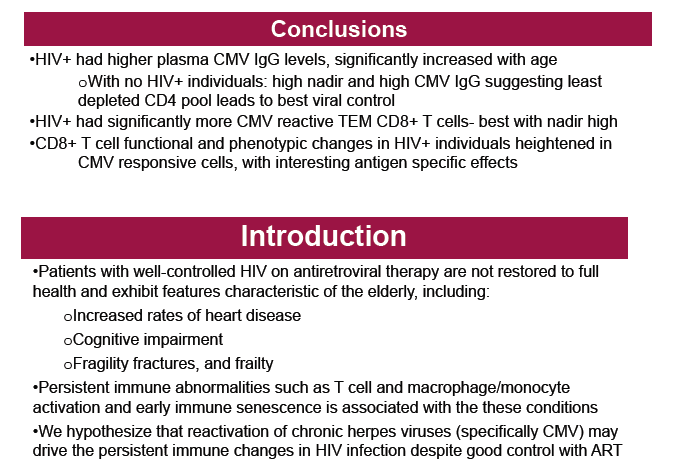
Program abstract
Background: Immune abnormalities including T cell and macrophage/monocyte activation and immune senescence have been associated with ageassociated co-morbidities in HIV. We hypothesize that reactivation of chronic herpes viruses (specifically CMV) may drive the persistent immune changes in HIV infection- despite good control with ART. We aim to define the occurrence of CMV reactivation and its relationship to age in HIV/CMV co-infected individuals compared to CMV monoinfected individuals and to define the contribution of CMV to a CD8 dominant pro-inflammatory phenotype of aging.
Methodology: We used stored samples from 20 virologically-suppressed HIV-infected and 9 sociodemographically-matched HIV-uninfected individuals enrolled in the Stanford HIV Aging Cohort (SHAC). Plasma CMV IgG antibody titer was measured, restricting our analysis to 19 of 20 HIV-infected and 8 of 9 HIV-uninfected participants who were documented to be CMV-infected. Flow cytometric analysis on peripheral blood mononuclear cells allowed phenotyping of both total immune subsets (bulk) and CMV-responsive T cells, identified by IFNγ production following CMV peptide pool stimulation (pp65 and IE-1 pools, JPT Peptide Technologies). We used Mann-Whitney tests and nonparametric Spearman correlations to evaluate p and r values.
Results: HIV-infected participants (median age 54.5, median nadir and current CD4 135 and 653 cells/μL, respectively) had significantly higher CMV IgG titer than similarly aged HIV-uninfected participants (p=0.002), suggesting higher rates of CMV reactivation. Higher CMV IgG titers were also correlated with increasing age in both HIV-infected individuals (r = 0.57; p = 0.010) and in the overall study population (r = 0.44; p = 0.021). Bulk T-cell phenotyping revealed a higher percentage of terminally-differentiated effector memory CD8+ T cells (CD27- CD28- CD45RA+) in HIV-infected individuals compared to similarly aged HIV-uninfected individuals (Median 18.7% vs. 4.9%, p=0.018). HIV-infected individuals exhibited increased presence of late-stage differentiated cells staining for the pro-inflammatory cytokine, IFNγ, compared to HIV-uninfected individuals (median IFNγ+ cells/ml: 4810 vs. 333; p=0.001), which correlated positively with a higher CMV IgG response (r = 0.43, p = 0.045). IFNγ+ late-stage differentiated cells correlated positively with duration of HIV infection (r = 0.6265, p = 0.0110), while showing no significant relationship with age.
Conclusions: More frequent reactivation of CMV in HIV may contribute to immune aging in HIV patients. The immune-senescent CD8+ T cells appear to be CMV specific and related to duration of HIV infection rather than age.
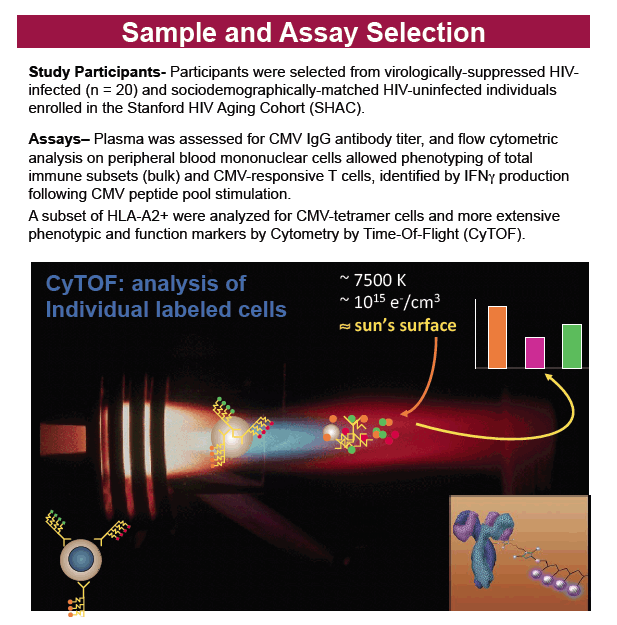
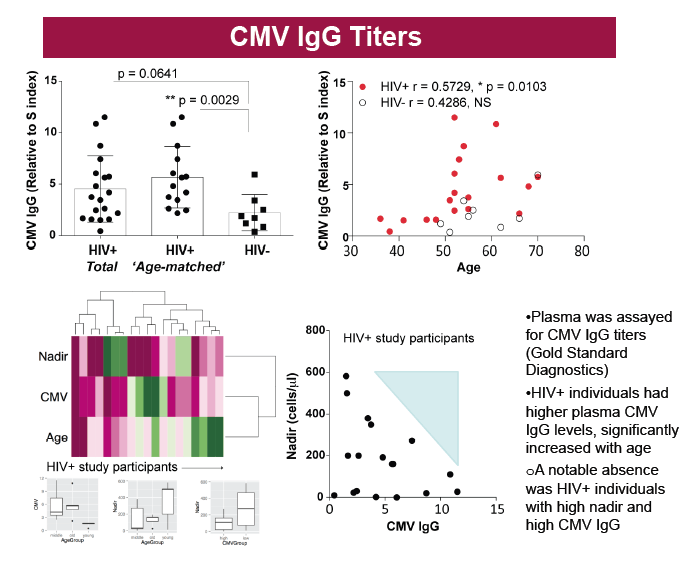
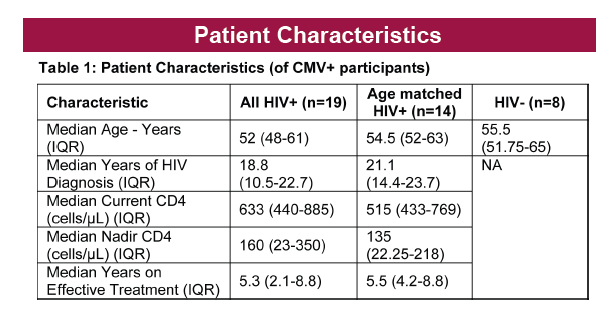
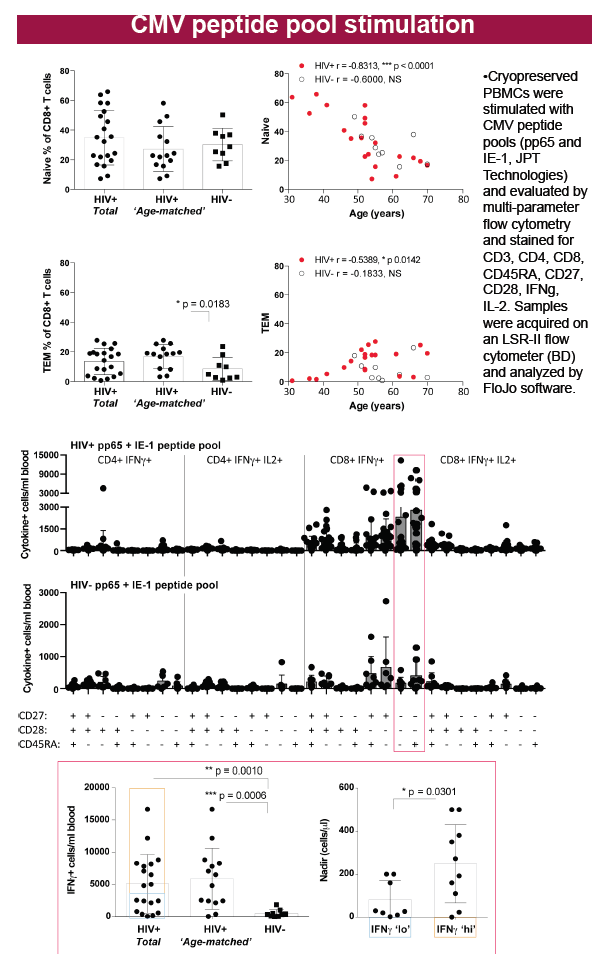
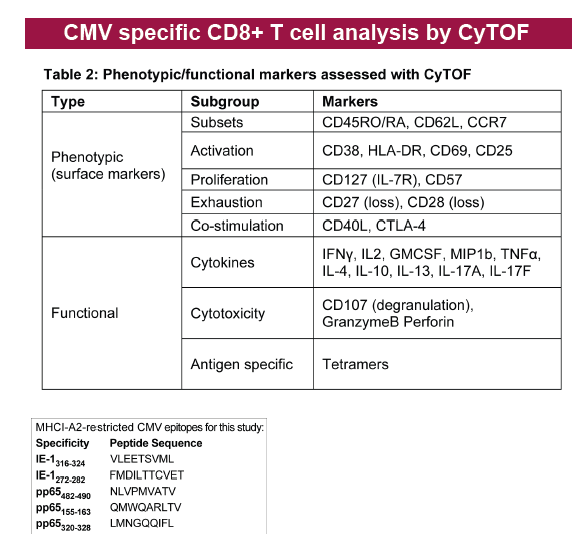
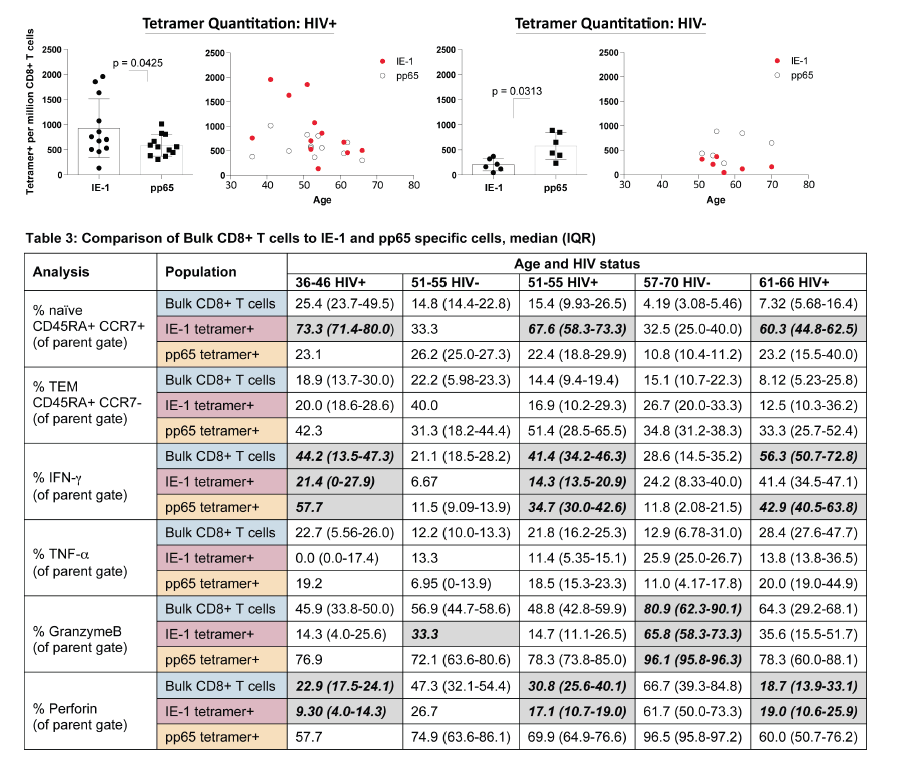
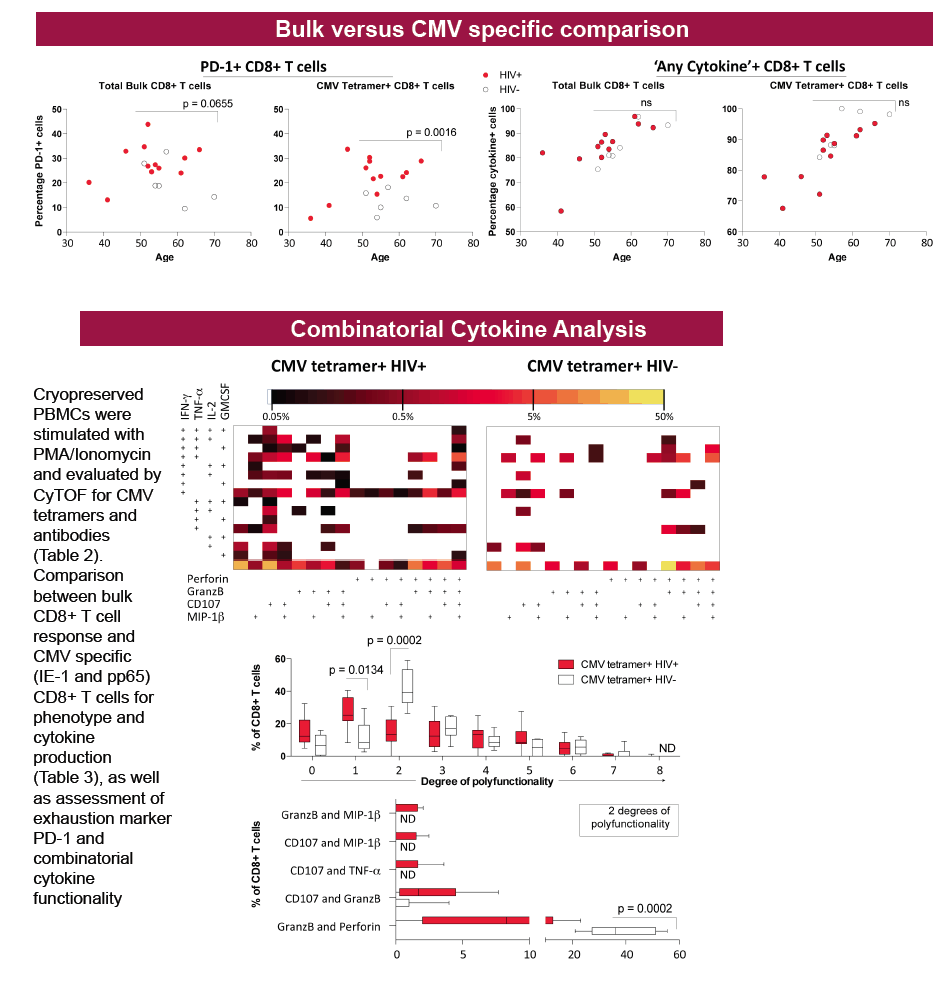
|
| |
|
 |
 |
|
|